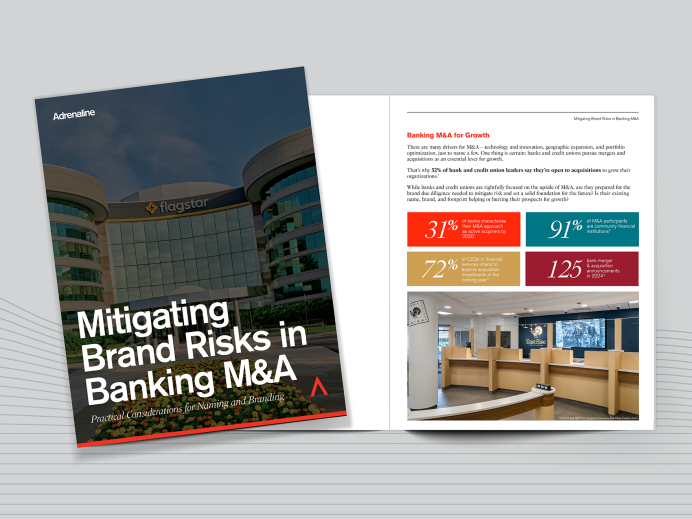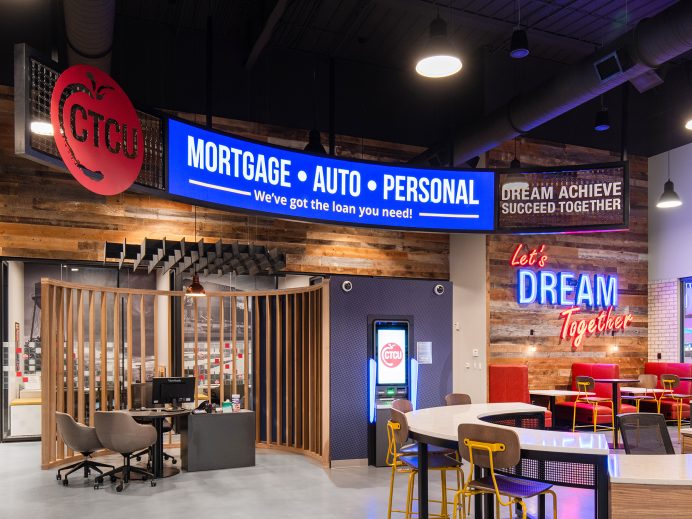Retail branch banking is transforming.
From Chase’s investment in their brick-and-mortar branch network to consumers’ consistent preference for branch banking close to home, branch transformation is the focus of a lot of discussion (and, frankly, consternation) among bank decision-makers.
At once a channel requiring the investment of sizeable resources to maintain, the retail branch network can also be a place of great opportunity when optimized in a pragmatic and clear-eyed way. So, how are financial institutions approaching the need for not insignificant cost-cutting in this channel when 81% of consumers still want access to in-person advisors at the branch?
McKinsey looked at exactly that type of necessary branch transformation, especially in light of COVID, and found that when analyzed in two groups – “banks that made bold reductions and banks that moved cautiously” – the banks that took bold steps fared much better. According to McKinsey: “A bold transformation of the branch network delivered four times higher productivity gains than incremental adjustments and produced a 23% leaner network.” Aggressive optimization not only results in a more efficient branch network, it is more lucrative as well, producing 28% higher sales per branch staff.
Optimize the Existing
For FIs, the challenge and the opportunity is to take cost out of lower performing branches and invest it into higher opportunity locations instead. In other words, optimizing each branch within the network. While that does mean closing branches with the least opportunity and rightsizing others to reduce costs, the branches with the highest potential receive the cost savings from reductions and reinvest them in enhancements and expansion. From McKinsey’s data we find that the most successful institutions transformed – not merely reduced – redesigning formats and staff models.
According to McKinsey, “Simply closing branches and reducing staff are insufficient. Leaders transformed, not merely reduced, their physical network. They reviewed existing customer patterns and network activities, including running detailed surveys of staff time-spend that yielded surprising results.” With an eye towards optimization, FIs that made bold, data-based, market opportunity focused decisions around their branch networks made the most gains. Those reducing locations by 30% not only increased sales per branch, but also realized 25% improvement in customer satisfaction scores.
A smaller, more tightly efficient branch network serves the bank better, and as it turns out, also serves the customer better, too. The kind of aggressive transformation needed includes banks piloting or extending efficient branch models like ITMs or micro-branches; optimizing staffing to enhance productivity through TCRs, cash automation and Universal Banking; migrating simple transactions to self-service channels; and realigning the branch experience towards its new purpose better matching shifting consumer behavior. These include new reimagined full-service North Star experiences and remote channels that thrive on efficiency.
Do More with Less
What the entire banking industry is facing – especially in light of post-COVID demands – is the need to do more with less. Banks must achieve more savings and more growth with less staff and less lobby access. While a high bar to be sure, turning less into more can actually present opportunity for financial brands. Fewer transactions inside the branch provide banks with an opportunity to convert transaction-based interactions into more high-value experiences, adapting branch experiences into what consumers are really looking for from their local banks – expert consultation.
While no one loves the idea of closing a branch in a community, closure has to be part of the optimization equation in markets with least growth potential. For every branch a bank closes or downsizes, the sales burden from that previous branch is then transferred to the remaining or new branches with more growth potential, along with digital channels that can take on much of the everyday transaction activity and move toward providing a more seamless balance of digital and physical delivery between branch and mobile.
By taking cost out, banks set themselves up with a more resilient branch network where they can reinvest to grow – whether that’s through enhancements in existing branches or expansion to new branches in new markets. Where the real magic occurs in branch optimization is in reductions that can be done as a bank reinvests. This means that even in new locations or relocations, branches can be optimized with staffing and technology, while other formats are explored within efficient hub-and-spoke cluster models, sparking a continuous cycle of optimization, primed for opportunity.
In our next article in the Investing in Branch Transformation series, we’ll look at varying stages of the branch transformation journey and how banks are determining their capacity for change. Also, be sure to tune into Believe in Banking as it tracks the big trends, both inside and outside the industry, that are impacting financial services and informing the banking experience. For more insights on branch and brand strategy, contact Adrenaline’s experts at info@adrenalinex.com.
Adrenaline is an experience design agency that creates and implements end-to-end branded experiences through creative and environmental design. We enhance our clients’ customer experiences across digital and physical channels, from their branding and advertising to design and technology in their spaces. After transforming an organization’s brand, Adrenaline extends it across all touchpoints — from employees to the market to in-store environments. And, we focus on serving industries that sell human experiences including financial, healthcare, sports and entertainment.







